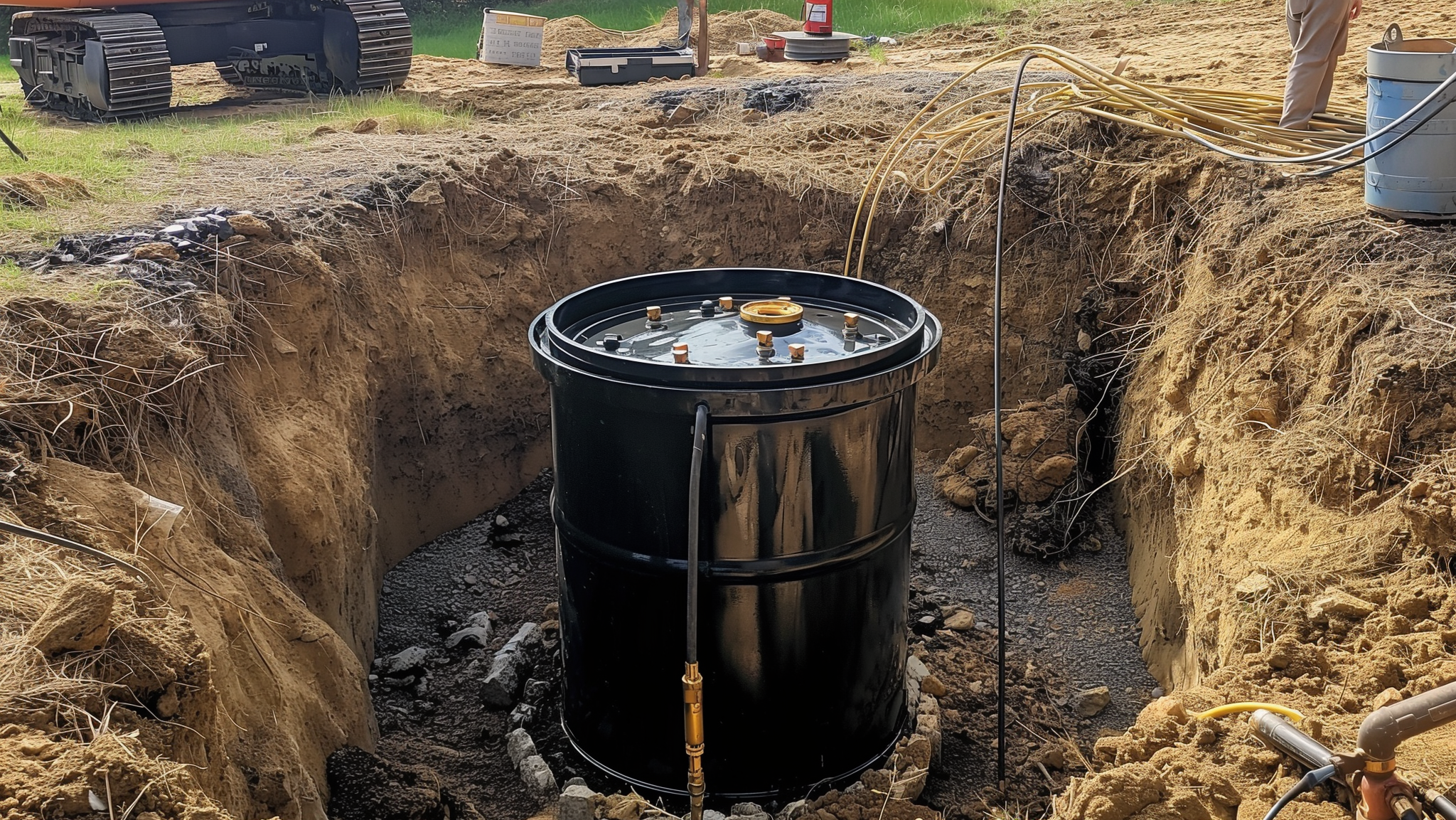Key points
• Dry well systems are underground structures that dispose of wastewater by allowing it to dissipate into the surrounding soil. They are typically used for gray water from sinks, showers, and laundry, not for sewage.
• Construction and materials involve a pit filled with rocks or gravel, or a prefabricated tank, which increases the surface area for water absorption and prevents soil erosion around the disposal area.
• Maintenance and regulation require regular inspection and cleaning to prevent clogging and ensure proper functioning. Regulations vary by location, and it is essential to comply with local health and building codes when installing a dry well septic system.
Contents
- 1 Key points
- 2 Overview of Various Septic System Types
- 3 Conventional Systems
- 4 Alternative Systems
- 5 Dry Well Systems (Introduction)
- 6 How Dry Wells Work
- 7 Waste Processing and Dispersal Mechanism
- 8 Planning and Permits
- 9 Step-by-Step Installation Guide
- 10 Regular Maintenance Practices
- 11 Identifying and Addressing Common Issues
- 12 Understanding the Ecological Implications
- 13 Relevance: The environmental significance of properly functioning dry well systems
- 14 Compliance with Local Health and Environmental Codes
- 15 Frequently Asked Questions (FAQ)
Overview of Various Septic System Types
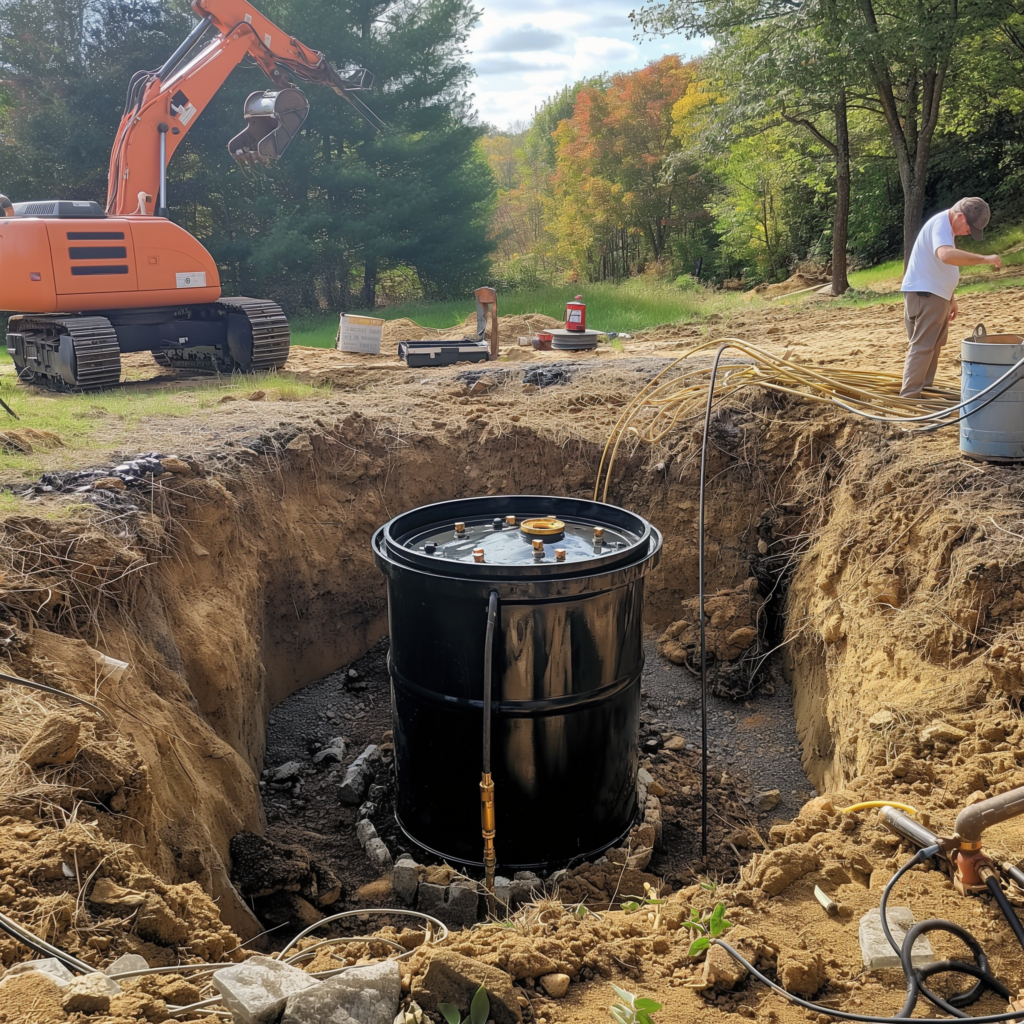
Septic systems come in a myriad of forms, each tailored to specific needs and environmental conditions. They range from the basic and widely used conventional models to more complex alternative configurations designed to tackle particular challenges such as limited space or sensitive ecological sites.
Conventional Systems
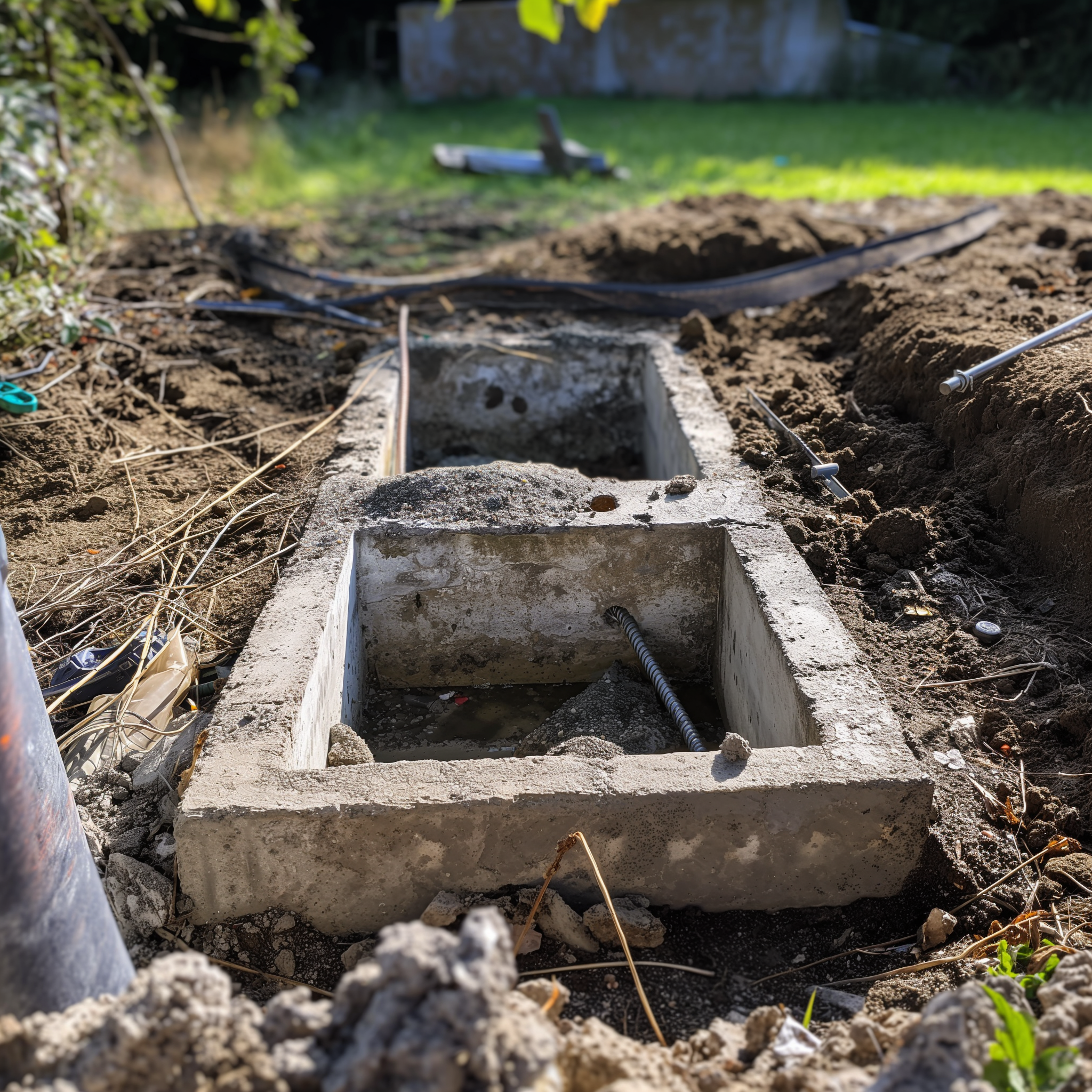
Think of conventional septic systems as the bread and butter option — not particularly fancy but reliable all the same. The setup is quite straightforward: a septic tank connected to a leach field, also known as a drainfield, where natural processes take over, filtering the effluent through soil layers before it safely rejoins the groundwater system.
Alternative Systems
In scenarios where conventional means fall short, alternative systems enter the fray. These customized solutions come equipped with pumps or gravity-fed designs that facilitate extra treatment steps. For instance, some might utilize sand or peat filters or constructed wetlands to purify the wastewater to higher standards before dispersal into the environment.
Dry Well Systems (Introduction)
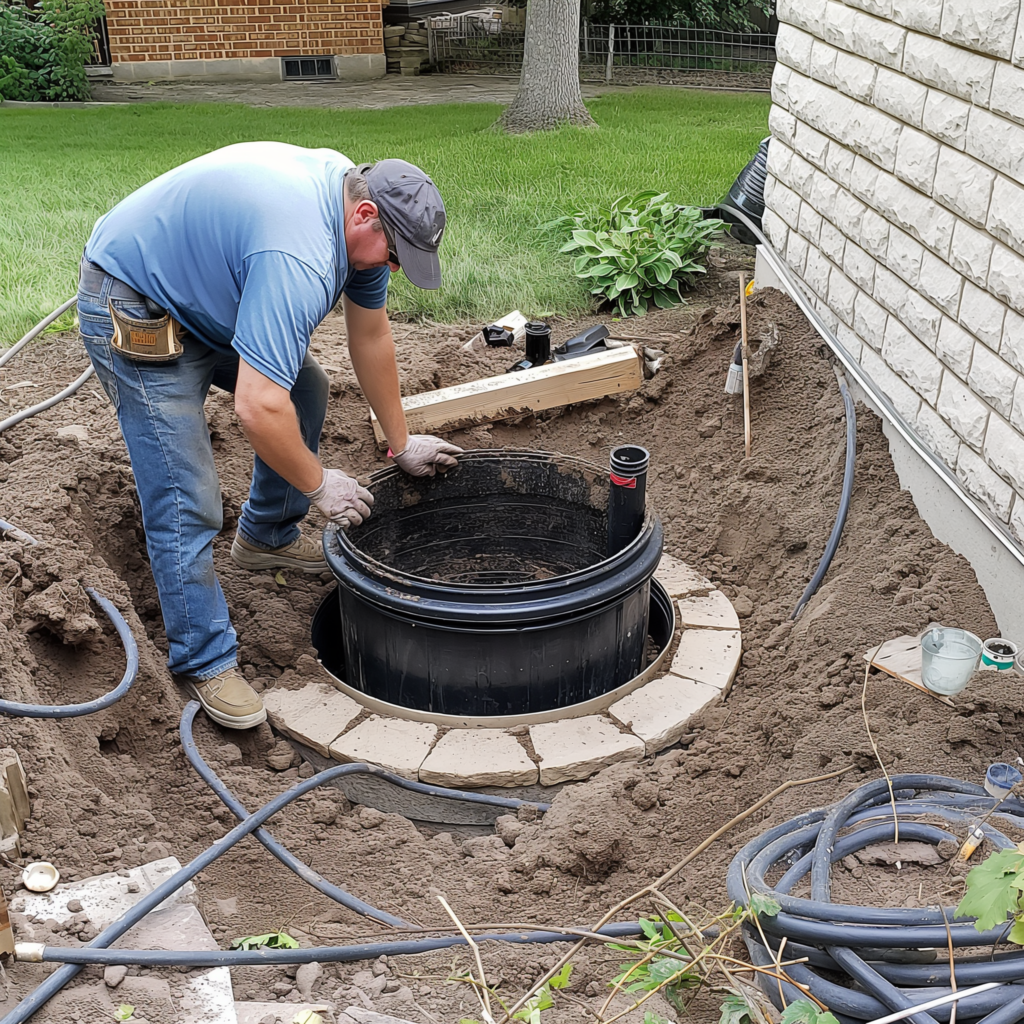
Dry well systems reveals they’re essentially a subset within the category of alternative septic arrangements. Functioning as standalone units particularly adept at greywater disposal—or acting as companions to traditional systems when additional absorption space is necessary—they’re designed to manage water that does not contain organic waste.
Definition and Basic Concept
A typical dry well is defined by its structure: a small pit filled with rock or rubble that traps excess water which then percolates into the surrounding soil. Basically, it’s an underground tank managing water runoff from various household sources without involving biological waste.
Subset of alternative septic systems
It’s paramount to recognize dry wells as merely one piece of the larger puzzle that constitutes alternative septic applications. Despite their specialized role in managing water sans sewage, they share an underlying connection with other innovative systems aimed at effective waste treatment when traditional approaches simply won’t cut it.
How Dry Wells Work
They manage waste by collecting it in a tank where solids settle at the bottom while oils and greases float to the top, just like any old septic tank would do. The clear middle layer then flows into the dry well for dispersal into the surrounding ground, where Mother Earth naturally treats and filters this effluent.
Waste Processing and Dispersal Mechanism
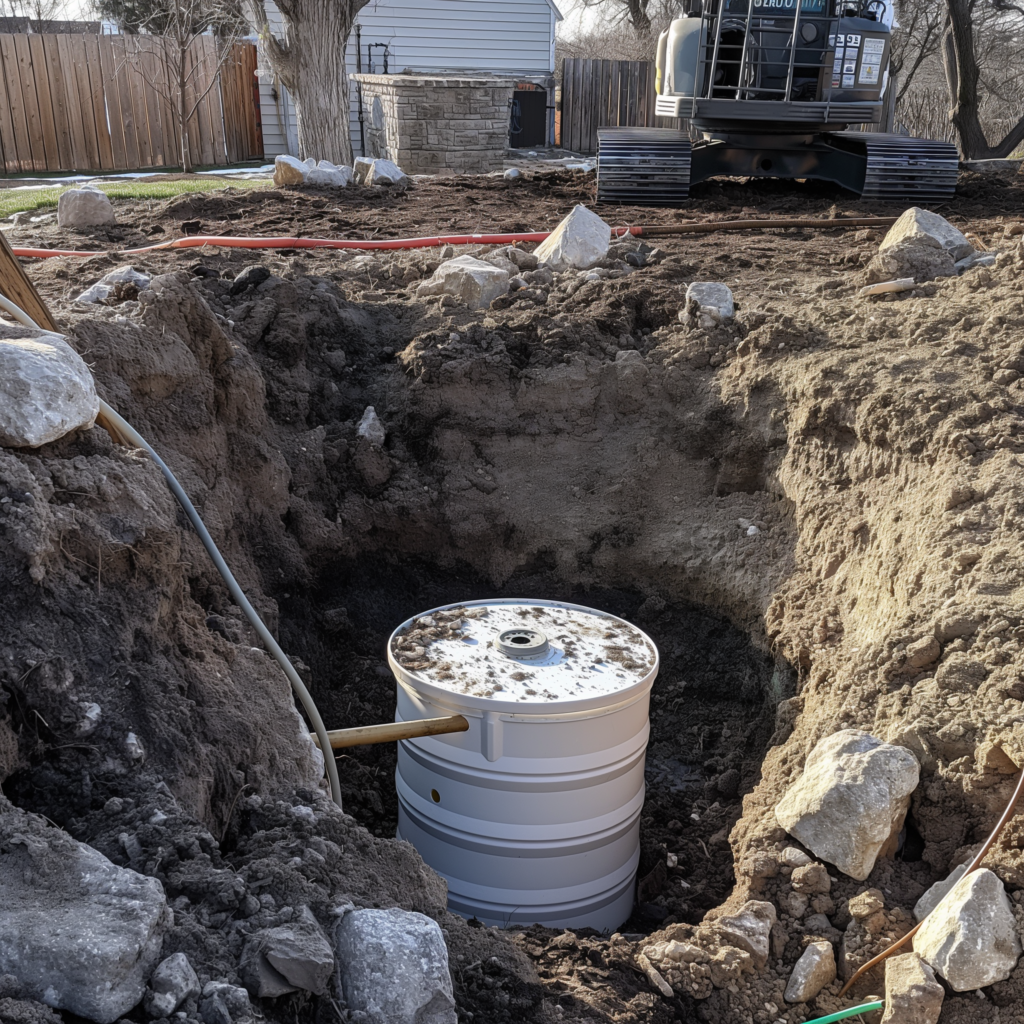
Honing in on their waste processing chops, dry wells showcase their ability to handle both greywater from sinks and showers, as well as black water from toilets. It’s worth mentioning they’re somewhat akin to other septic siblings in terms of functionality but stand out with their distinct dispersal methodology and structure.
Percolation and Filtration Process
You see, percolation and filtration are the heart and soul of these systems’ operation. As effluent permeates through openings at the bottom or sides of the pit, it’s naturally scrubbed clean by the soil—talk about being eco-friendly!
Design Features Specific to Dry Wells
Bearing unique design quirks, dry wells have to be capable enough so as not to buckle under sudden influxes of water or clog up from sediment over time.
Structural Components
To pull off their job without a hitch, dry wells parade several structural components that are indispensable:
– A solid pre-cast concrete or rugged plastic tank.
– Holes or openings positioned strategically for optimal percolation.
– Gravel or similar aggregate snugly packed around to aid in filtration.
These bits and bobs ensure waste makes its getaway under your backyard without causing a ruckus.
All in all, if you’ve got a dry well hidden beneath your turf, rest easy knowing it’s tirelessly working 24/7. Although she ain’t much to look at, she’s doing her bit to keep your home’s waste discreetly managed! Yet remember – these systems need checking on every so often; neglect can lead ’em down the path toward some messy (and costly) issues.
Soil Composition and Percolation Rates
When considering soil as the foundation of an effective dry well system, one cannot overstate the significance. Simply put, soil composition is king. To get to the heart of the matter, it’s all about how quickly water can seep through the dirt – a characteristic known in the business as ‘percolation rates.’ If the soil drains quicker than a sieve, it’s a winner. But if it’s as reluctant/slow, then there’s trouble brewing. Hitting just the right spot—somewhere between too fast and too slow—is what we’re going for.
Topographical Considerations
Casting our eyes over the lay of the land – or topography – is every bit as important as getting up close and personal with soil samples. Being savvy about your site’s topography isn’t just smart; it’s non-negotiable when adapting methods used for other types of septic systems to suit your dry well. That’s because whether you’re on a hilltop with vistas that’d make a painter swoon, or tucked into a snug little hollow, dictates much more than any landscape artist’s scene—the elevation difference could be making or breaking your system’s mojo.
Installing a dry well isn’t rocket science but cut corners during site evaluation, and guaranteed you’ll be all tangled up in unnecessary knots down the road. Missing out on this stuff can be costly and paying heed to these factors from get-go will have you grinning like you’ve found treasure without needing to swing a pickaxe.
Planning and Permits
It’s crucial to note that dry well systems share a number of pre-installation steps just like traditional septic tanks. Essentially, before you get your hands dirty, you’ve gotta lay the groundwork—this means securing all the necessary permits from local health or building departments. Meticulously check off every requirement; otherwise, you might be knee-deep in bureaucracy instead of your yard. Remember, it’s about ensuring that your setup plays nice with both environmental regulations and public health standards.
Step-by-Step Installation Guide
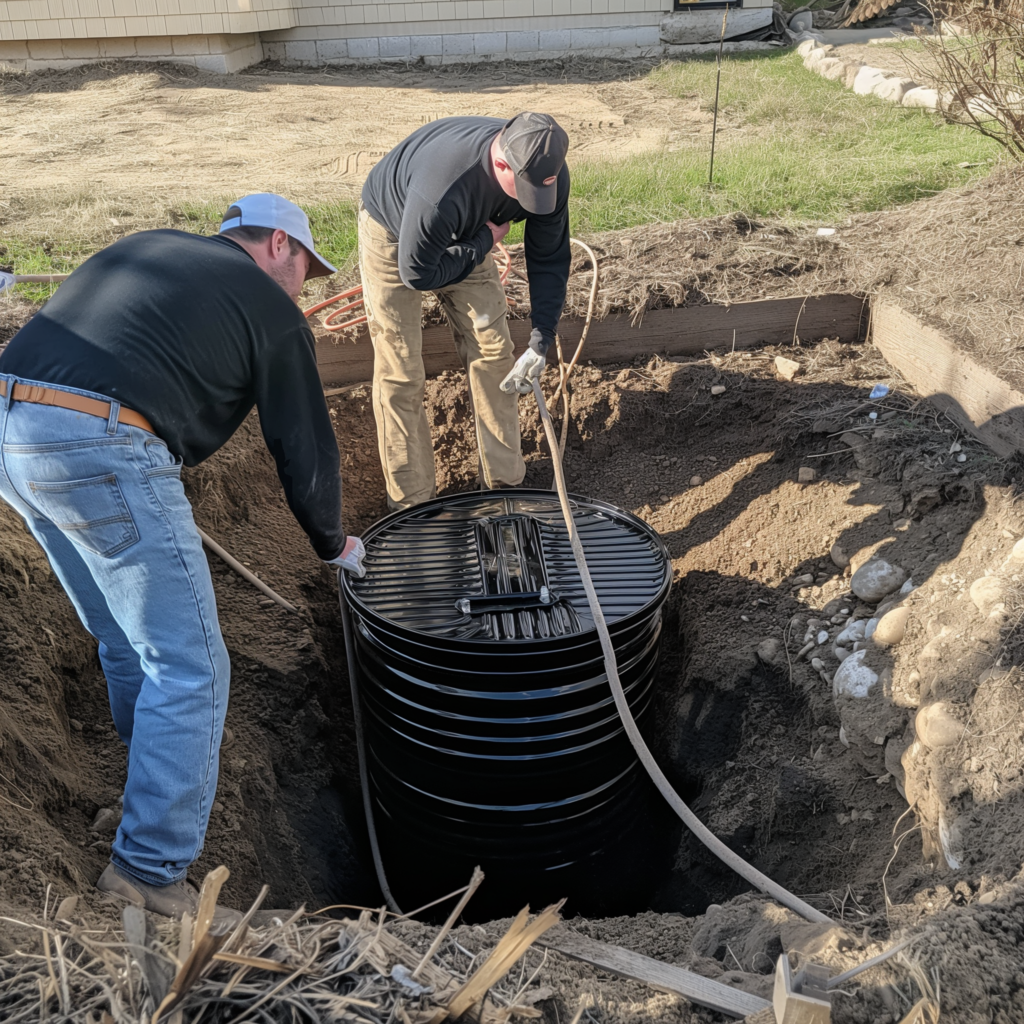
Here’s where things start to differ a tad. The process of crafting a dry well septic system involves specific excavation techniques tailored to its unique design. You’ll delve into the earth with precision, creating a space that’s been optimized for your dry well. It goes without saying—but we’ll say it anyway—that accuracy is key during this phase. Ensuring proper drainage and avoiding any structural mishaps is like walking a tightrope; it requires balance and an eye for detail.
Connection to the Primary Septic System
Juxtaposed with the construction phase is the step where your dry well begins its collaboration with the rest of your septic team. Think of it as a sort of an integration; a joining of forces where every component has got to find its place, for that matter. It’s about achieving cohesiveness within an intricate underground ecosystem where each piece is as crucial as the last.
Remember, don’t just dive right in—septic installation is a delicate dance between man, machine, and mother nature, so take it step by step and always stay on your toes!
Regular Maintenance Practices
Maintaining a dry well system necessitates a touch of diligence to ensure longevity and effectiveness. It’s crucial – no, it’s essential – to keep an eye on the system with periodic cleaning and inspections.
Cleaning and Inspections
Imagine your dry well as a trusty car; it needs regular check-ups. You wouldn’t skip an oil change, would you? Similarly, your dry well requires routine clean-outs to prevent build-up that can lead to problems. Now, what exactly does this entail? Well, you’ve got to make sure solids and sludge are not gate-crashing the party in your dry well. This could mean having a pro come out every so often to clean it up.
Inspections, too, have their spot on the maintenance roster. Just like you’d glance at your car dashboard for troublesome lights, peep into your dry well system regularly — annual inspections are a good rule of thumb here. This is when you’re like a detective looking for any subtle signs of trouble that might be brewing below the surface.
Identifying and Addressing Common Issues
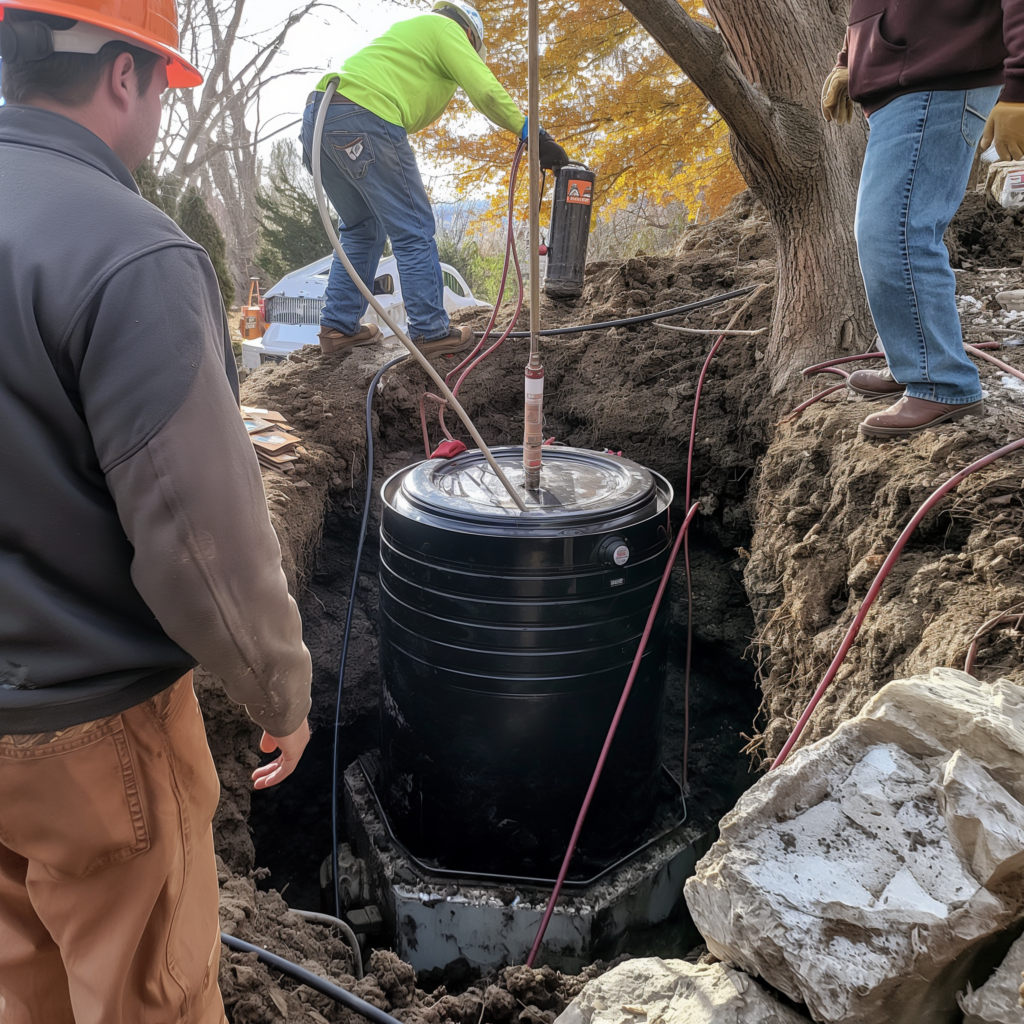
Ah, troubleshooting – it’s not just a techy term; dry wells need it too! Understanding the most common issues can save you from a whole heap of mess down the line.
Overflows and Blockages
You know how frustrating it is when something gets clogged – whether it’s your kitchen sink or traffic on your way home. Well, overflows and blockages in dry wells are equally aggravating. But here’s the kicker; overflow could point towards excessive water use or maybe rainfall. On the flip side, blockages represent things getting trapped where they shouldn’t be.
Getting ahead of these problems involves getting your hands (or someone else’s) dirty now and then or tweaking daily habits – like easing up on excessive water use. Just give those fixtures and appliances a look-over to ensure they’re all playing nice with your dry well. At times when DIY won’t cut it, bringing in professionals is much like calling in the cavalry! They’ll swoop in, assess the situation with tools and expertise tailored for dry wells — quite different from regular septic systems yet sharing enough similarities where fundamental knowledge applies.
So there ya go – a little insight into keeping your dry well in tip-top shape with maintenance tips that are straightforward but oh-so-crucial! Remember: Keep it clean, inspect it now and then, stay alert for any issues, and tackle problems head-on before they spiral into disasters!
Understanding the Ecological Implications
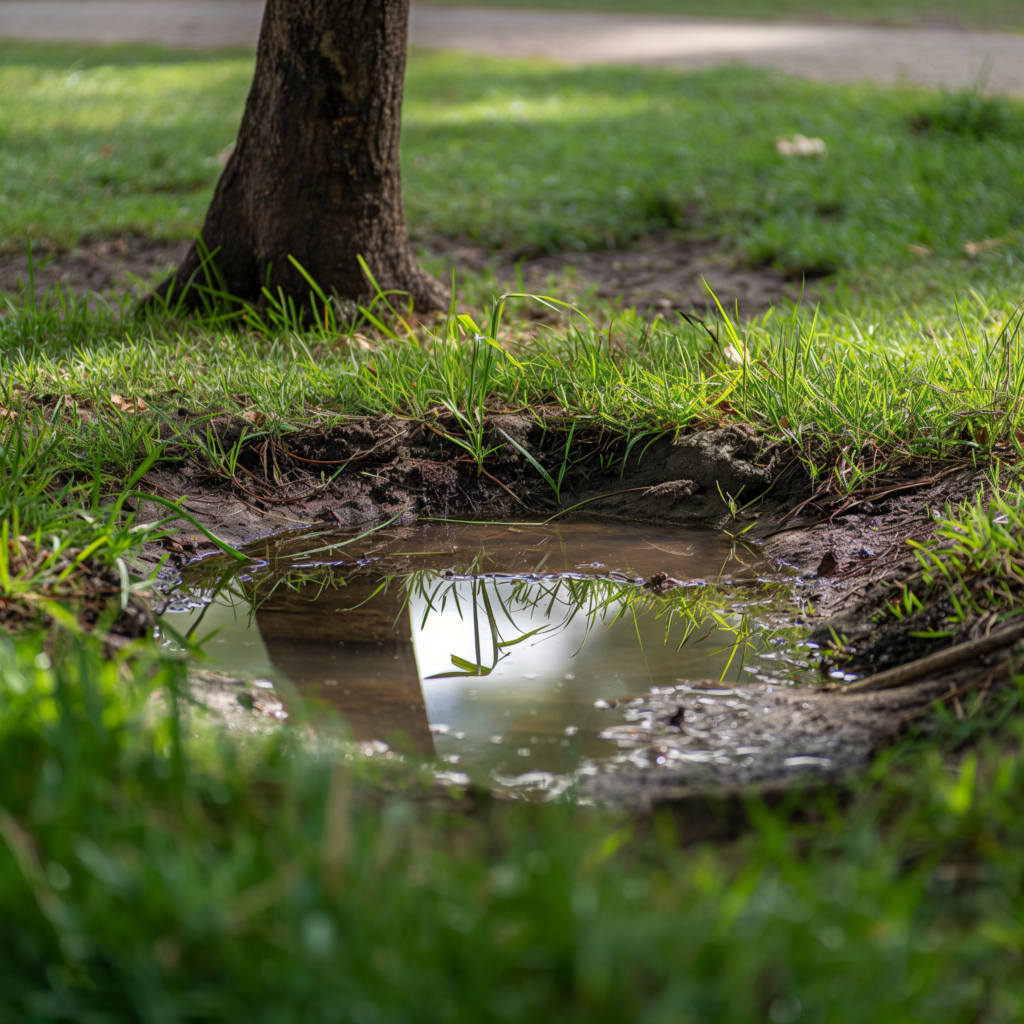
When it comes to the environment, a well-maintained dry well system isn’t just a good idea—it’s essential. Alright, so why’s that you ask? Let’s break it down.
For starters, these systems play a big part in preventing contaminants from seeping into our precious groundwater. And honestly, nobody wants that. Plus, if you’re not careful and your system’s not up to snuff, it could mean trouble for local wildlife and plants—not cool.
Not to mention, poorly treated wastewater can end up in rivers or lakes, which is bad news for anyone who enjoys a clean swim or catchin’ fish on a Sunday afternoon.
Relevance: The environmental significance of properly functioning dry well systems
So here’s the deal: a dry well system that’s doing its job right is like Mother Nature’s little helper. When they work correctly, they filter out nasty stuff before it can harm the soil and water around us. Sure, it might seem like a small thing—a little goes a long way in this case! These systems help keep our environment cleaner and safer for all living creatures—big and small.
Compliance with Local Health and Environmental Codes
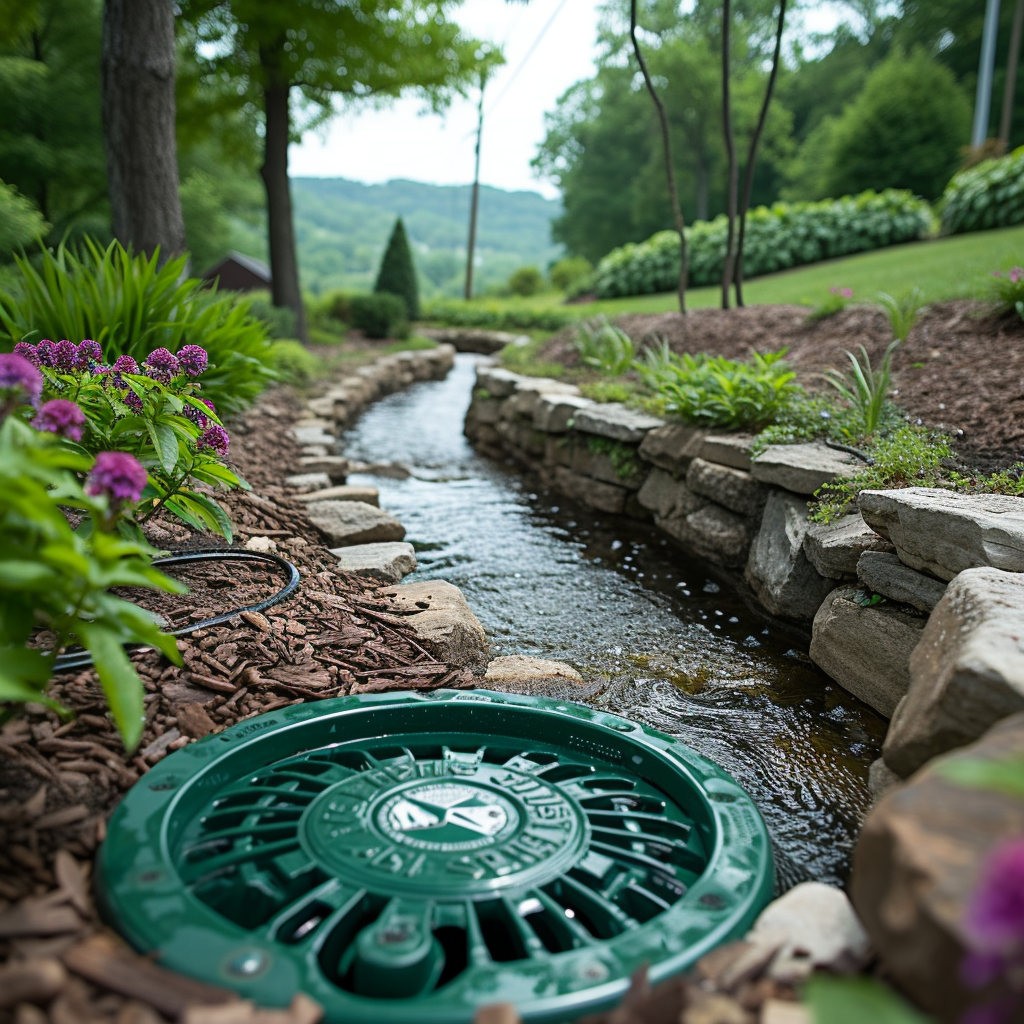
Now let’s talk rules because there’s quite a few when it comes to septic systems—including dry wells. Sticking to local health and environmental codes isn’t just a hoop to jump through; it actually makes sure folks stay healthy and ecosystems remain protected. Honestly, nobody wants the hassle of fines or having to redo their system ’cause they didn’t follow the playbook.
Similarity: Regulatory adherence as with all septic systems, with a focus on dry wells
What’s required for septic systems is also expected of dry wells. You’ve also got to make sure everything fits together nicely because all septic components matter equally when it comes to passing inspections and protecting the planet. Trust me; ticking off these check-boxes is worth the peace of mind knowing your system won’t be bringing down mother nature’s wrath anytime soon.
Frequently Asked Questions (FAQ)
Can a homeowner with limited backyard space install a septic tank or is a drywell a more suitable option?
For homeowners who are dealing with limited space in their backyards, a traditional septic tank may not be viable. In such cases, a drywell could serve as an efficient disposal option, provided it complies with local regulations.
What are some clear indicators that a septic system owner should look for that hint at potential issues within their leach field?
Septic system owners ought to keep an eye out for signs like water pooling above the leach field or lush green grass in the area, which could indicate blockages or over-saturation. A foul odor emanating from the field is another reliable indicator of problems.
How frequently should a homeowner inspect and maintain their septic tank systems to prevent the need for costly repairs?
Regular maintenance and inspection of septic tanks should occur every 3-5 years to ward off expensive repairs down the line. Homeowners can enlist services such as Mr. Rooter Plumbing for professional inspections.
Is there any compatibility issue between certain household chemicals and the biological processes at work in leaching pits?
Indeed, homeowners must exercise caution when it comes to using chemicals because they can disrupt the vital bacterial balance in a leaching pit, hampering its ability to properly process wastewater.
Could you explain why gravelless drainfield systems might be a smart choice for septic system owners in certain regions like Greater Syracuse?
The primary advantage of gravelless drainfield systems, especially for places like Greater Syracuse, lies in their cost-effectiveness and ease of installation compared to traditional stone and pipe methods.
Are there any specific environmental benefits linked to choosing a drip distribution system for one's property over conventional septic tanks?
Opting for a drip distribution system can have several environmental upsides, such as reduced soil disruption and more efficient water use, making it a greener choice compared to traditional septic tank setups.
When considering the design of a new septic tank system, what are some key soil factors that impact the size and type of system that will work best?
[Rochester] area landowners need to consider soil permeability, composition, and absorption rates as these factors directly affect the size and type of septic system that would function optimally on their property.
As an environmentally-conscious homeowner pondering over 'Drywells vs Septic Tanks,' how do each fare on sustainability metrics?
From an ecological standpointe, well-constructed drywells minimize surface runoff by allowing more effective infiltration into surrounding soils. Septic tanks are not perfect when it comes safeguarding our natural resources.

I’m Tim Robberts, a seasoned wastewater treatment & septic system expert with over 40 years of experience in the field. My career began as a septic tank installer, and I quickly gained a reputation for my attention to detail and commitment to excellence. Over the years, I’ve honed my skills in designing, installing, and maintaining septic systems for residential and commercial properties.
